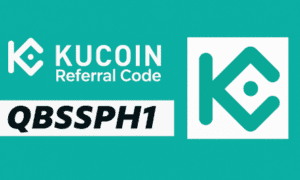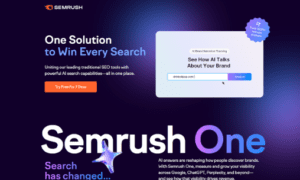In the world of fintech, few forces seem more at odds than compliance and innovation. One demands order, documentation, and caution. The other thrives on experimentation, speed, and risk-taking. Most founders either lean hard into disruption—hoping to fix regulation later—or build conservatively, stifling their own potential.
Sabeer Nelli, founder and CEO of Zil Money, has done neither. Instead, he’s built a company where compliance isn’t a blocker to innovation—it’s the scaffolding that supports it.
His ability to bridge regulatory rigor with product agility has helped Zil Money scale to over a million users, handling more than $91 billion in transactions. It’s also made the platform one of the most trusted, secure, and forward-moving tools in the small business fintech space.
Here’s how he does it—and what others in fast-moving sectors can learn.
Seeing Compliance as a Competitive Edge
Most startups treat regulatory requirements like hurdles: barriers to be cleared under duress. But Sabeer sees them differently.
To him, compliance is an asset. It signals maturity. It builds trust. It simplifies onboarding for larger clients. And when embedded early, it actually accelerates innovation—because you’re building in a way that scales safely.
From the earliest days of Zil Money, he made this mindset clear: “We’re not checking boxes—we’re creating a foundation.”
That’s why the company proactively pursued:
- SOC 1 & SOC 2: For secure financial processing
- PCI DSS: For credit card transaction safety
- ISO 27001 & 9001: For quality and information security
- HIPAA & GDPR: For data privacy
- NIST 800-53 & CCPA: For federal and consumer data protection
These aren’t just logos for the footer—they’re part of how the product is architected and maintained.
How Zil Money Builds With Guardrails
One of Sabeer’s key strategies is to embed regulatory logic into product design, rather than tacking it on afterward. That means:
✅ Role-based access controls
✅ Encrypted audit logs
✅ Workflow approvals for high-risk actions
✅ Redundant data storage policies
✅ Third-party compliance audits during dev cycles
When a new feature is conceived—like “payroll by credit card” or “one-click check mailing”—the compliance team is involved from the planning stage, not just during launch reviews.
This upfront alignment ensures products are market-ready and regulator-ready from day one.
Real-World Example: Innovation Inside Boundaries
When Zil Money introduced instant check printing and mailing, the obvious move might have been speed at all costs. But Sabeer insisted the system support:
- Signature verification
- Secure audit trails
- Real-time delivery status
- Postmark tracking
- User permissions for approval layers
The result? A feature that feels effortless to the user—but is fully compliant with financial regulations and enterprise-grade expectations.
This is innovation with foresight. And it’s a major reason why banks, CPAs, and large enterprises trust Zil Money with mission-critical transactions.
Fostering a Dual-Minded Culture
Innovation and compliance often come from different departments—one experimental, the other risk-averse. At Zil Money, Sabeer encourages overlap:
- Compliance officers attend product sprints
- Engineers are trained on regulatory basics
- Support teams flag potential compliance gaps from user feedback
- Leadership reinforces that both speed and security matter equally
This blurs the traditional wall between “builders” and “reviewers,” creating a company culture where everyone builds responsibly.
It also means less backtracking, fewer missed risks, and faster time-to-market with features that don’t require compromise later.
Advice for Startups: How to Blend Innovation with Compliance
Sabeer’s model isn’t just for fintech. Any high-growth company can benefit from balancing freedom with structure. Here’s how:
- Design With Constraints Early
Use compliance not as a blocker, but as a boundary that guides smart architecture. Think “designing a skate park” instead of building a maze.
- Create Cross-Functional Discovery Teams
Let your legal, product, and engineering minds co-create—not compete. When teams build together, they fight less later.
- Automate Where Possible
Manual compliance drains creativity. Automate logging, alerts, backups, and reports so teams can focus on building, not auditing.
- Be Transparent With Users
Clear language about security, privacy, and permissions builds trust. Zil Money explains its certifications and protocols in plain English—a rare move in finance.
- Celebrate Compliance Wins
New ISO certification? Faster onboarding from audit-readiness? Publicize it internally and externally. Make compliance part of the brand, not just the backend.
Why This Matters in 2025 and Beyond
The regulatory landscape isn’t softening. With rising scrutiny over data privacy, fraud prevention, and AI ethics, tomorrow’s products will need to be built with discipline baked in.
Sabeer’s approach gives Zil Money a clear edge:
- It can onboard enterprise clients faster
- It can partner with financial institutions with less friction
- It can launch globally with less retrofitting
- It earns user trust before marketing even begins
And best of all? It creates room for fearless innovation, because the infrastructure behind it is already solid.
Final Thought: Real Innovation is Responsible
In tech, we glorify speed. But speed without structure leads to crashes. Real innovation lasts only when it’s responsibly built.
Sabeer Nelli understands this deeply. That’s why Zil Money doesn’t lurch from idea to idea. It advances steadily, securely, and thoughtfully—without sacrificing ambition.
Compliance isn’t his constraint. It’s his guardrail. And with it in place, he and his team can push forward with more confidence, more creativity, and far fewer regrets.
That’s not just good leadership—it’s smart scaling.































